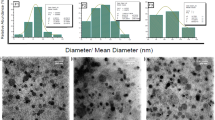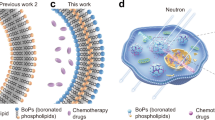Abstract
Pharmacokinetic and imaging studies in 19 patients receiving liposome-entrapped adriamycin (L-ADM) were carried out within the framework of a Phase I clinical trial (Gabizon et al., 1989a). The formulation of L-ADM tested consisted of 0.2 microM-extruded multilamellar vesicles composed of egg phosphatidylcholine, egg-derived phosphatidyl-glycerol (PG), cholesterol, and ADM intercalated in the fluid lipid bilayer. Plasma clearance of total drug extracted from the plasma after L-ADM infusion followed a biexponential curve with a pattern similar to that reported for free ADM. The plasma concentration of drug circulating in liposome-associated from was also measured in a subgroup of seven patients. Liposome-associated drug was found to be rapidly cleared from plasma. Its ratio to non-liposome-associated drug appeared to correlate with liver reserve, with highest ratios in patients with normal liver function. Liposome clearance, as measured by the plasma concentration of PG in three patients was slower than the clearance of liposome-associated ADM, suggesting that liposomes lose part of their drug payload during circulation. To learn about the liposome organ distribution, imaging studies were carried out with 111Indium-deferoxamine labelled liposomes of the same composition. Liposomes were cleared predominantly by liver and spleen and to a lesser extent by bone marrow in seven out of nine patients. In two patients with active hepatitis and severe liver dysfunction, there was minimal liver uptake and increased spleen and bone marrow uptake. Except for one hepatoma patient, intrahepatic and extrahepatic tumours were not imaged by liposomes, suggesting that liposome uptake is restricted to cells of the reticulo-endothelial system (RES).(ABSTRACT TRUNCATED AT 250 WORDS)
This is a preview of subscription content, access via your institution
Access options
Subscribe to this journal
Receive 24 print issues and online access
$259.00 per year
only $10.79 per issue
Buy this article
- Purchase on Springer Link
- Instant access to full article PDF
Prices may be subject to local taxes which are calculated during checkout
Similar content being viewed by others
Author information
Authors and Affiliations
Rights and permissions
About this article
Cite this article
Gabizon, A., Chisin, R., Amselem, S. et al. Pharmacokinetic and imaging studies in patients receiving a formulation of liposome-associated adriamycin. Br J Cancer 64, 1125–1132 (1991). https://doi.org/10.1038/bjc.1991.476
Issue Date:
DOI: https://doi.org/10.1038/bjc.1991.476
This article is cited by
-
A phase I and pharmacologic study of the combination of bortezomib and pegylated liposomal doxorubicin in patients with refractory solid tumors
Cancer Chemotherapy and Pharmacology (2008)
-
Phase I study of pegylated liposomal doxorubicin and the multidrug-resistance modulator, valspodar
British Journal of Cancer (2005)



